Tanya Schmah
Machine Translation of Mathematical Text
Oct 11, 2020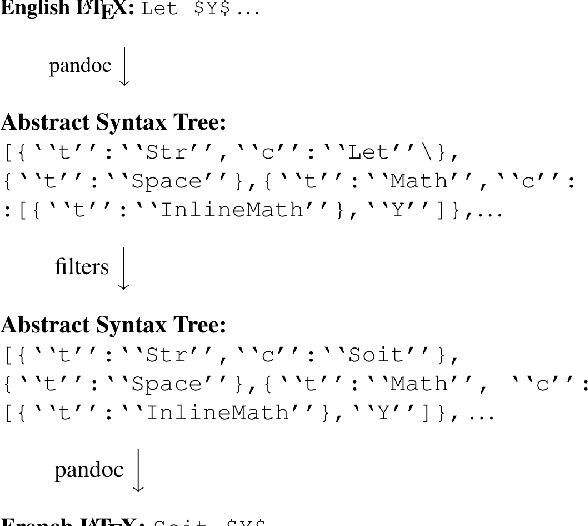

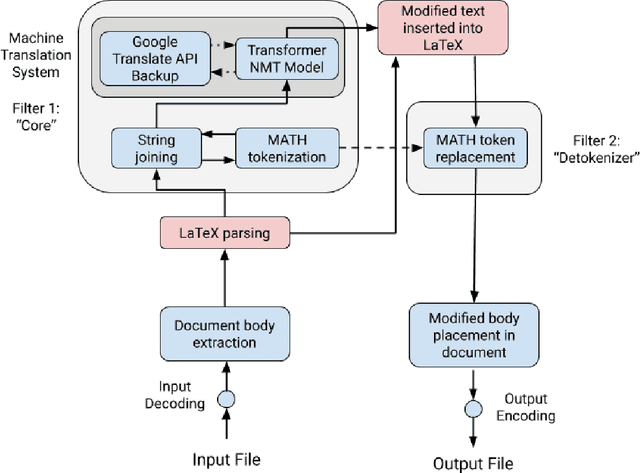
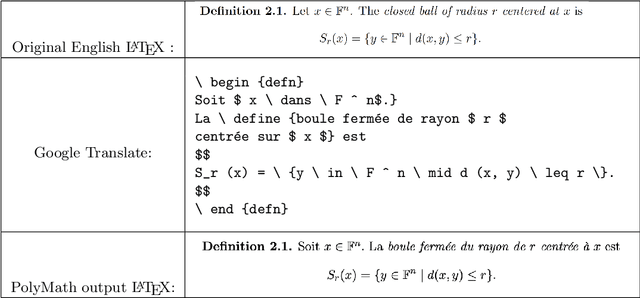
Abstract:We have implemented a machine translation system, the PolyMath Translator, for LaTeX documents containing mathematical text. The current implementation translates English LaTeX to French LaTeX, attaining a BLEU score of 53.5 on a held-out test corpus of mathematical sentences. It produces LaTeX documents that can be compiled to PDF without further editing. The system first converts the body of an input LaTeX document into English sentences containing math tokens, using the pandoc universal document converter to parse LaTeX input. We have trained a Transformer-based translator model, using OpenNMT, on a combined corpus containing a small proportion of domain-specific sentences. Our full system uses both this Transformer model and Google Translate, the latter being used as a backup to better handle linguistic features that do not appear in our training dataset. If the Transformer model does not have confidence in its translation, as determined by a high perplexity score, then we use Google Translate with a custom glossary. This backup was used 26% of the time on our test corpus of mathematical sentences. The PolyMath Translator is available as a web service at www.polymathtrans.ai.
Exploiting bilateral symmetry in brain lesion segmentation
Jul 18, 2019


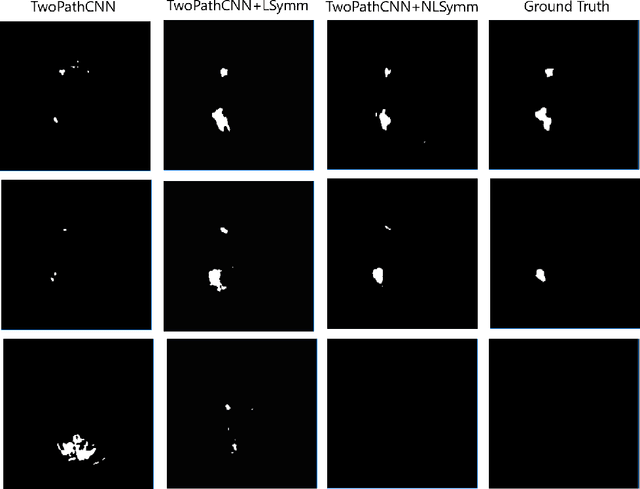
Abstract:Brain lesions, including stroke and tumours, have a high degree of variability in terms of location, size, intensity and form, making automatic segmentation difficult. We propose an improvement to existing segmentation methods by exploiting the bilateral quasi-symmetry of healthy brains, which breaks down when lesions are present. Specifically, we use nonlinear registration of a neuroimage to a reflected version of itself ("reflective registration") to determine for each voxel its homologous (corresponding) voxel in the other hemisphere. A patch around the homologous voxel is added as a set of new features to the segmentation algorithm. To evaluate this method, we implemented two different CNN-based multimodal MRI stroke lesion segmentation algorithms, and then augmented them by adding extra symmetry features using the reflective registration method described above. For each architecture, we compared the performance with and without symmetry augmentation, on the SISS Training dataset of the Ischemic Stroke Lesion Segmentation Challenge (ISLES) 2015 challenge. Using affine reflective registration improves performance over baseline, but nonlinear reflective registration gives significantly better results: an improvement in Dice coefficient of 13 percentage points over baseline for one architecture and 9 points for the other. We argue for the broad applicability of adding symmetric features to existing segmentation algorithms, specifically using nonlinear, template-free methods.
FAIM -- A ConvNet Method for Unsupervised 3D Medical Image Registration
Nov 22, 2018

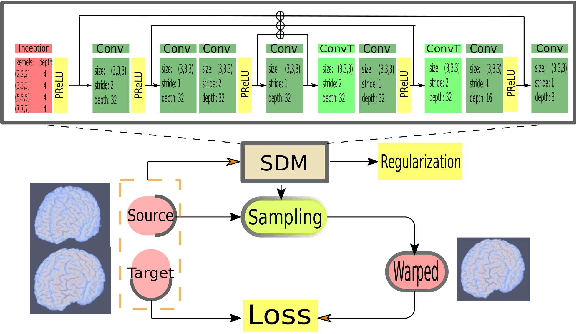
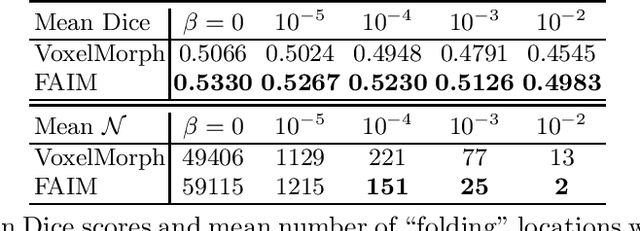
Abstract:We present a new unsupervised learning algorithm, "FAIM", for 3D medical image registration. Based on a convolutional neural net, FAIM learns from a training set of pairs of images, without needing ground truth information such as landmarks or dense registrations. Once trained, FAIM can register a new pair of images in less than a second, with competitive quality. We compared FAIM with a similar method, VoxelMorph, as well as a diffeomorphic method, uTIlzReg GeoShoot, on the LPBA40 and Mindboggle101 datasets. Results for FAIM were comparable or better than the other methods on pairwise registrations. The effect of different regularization choices on the predicted deformations is briefly investigated. Finally, an application to fast construction of a template and atlas is demonstrated.
 Add to Chrome
Add to Chrome Add to Firefox
Add to Firefox Add to Edge
Add to Edge